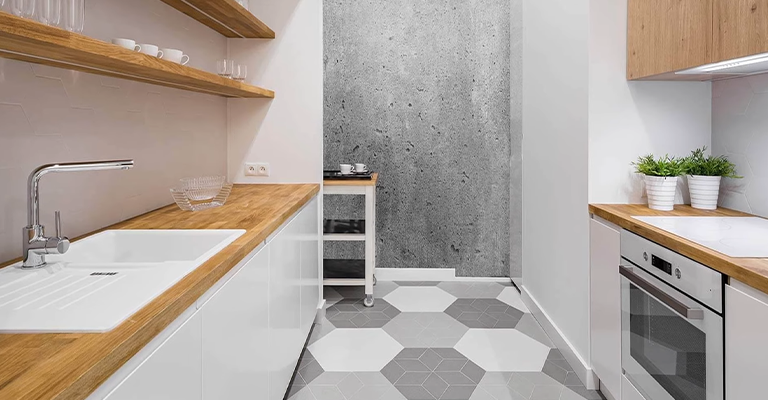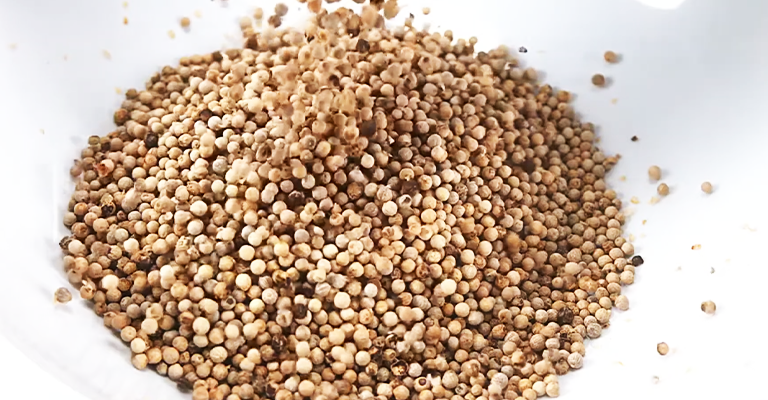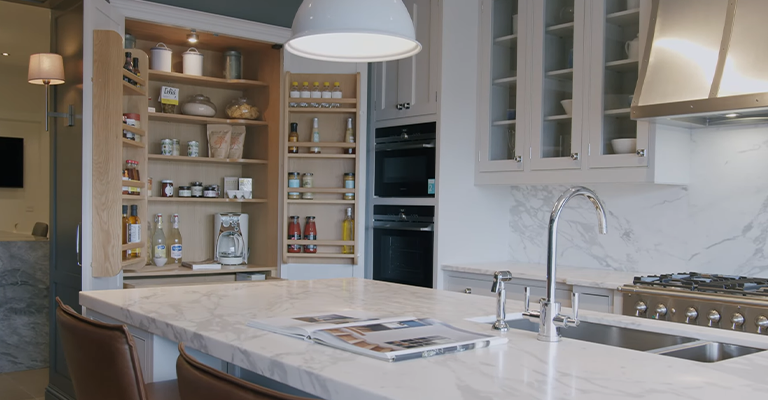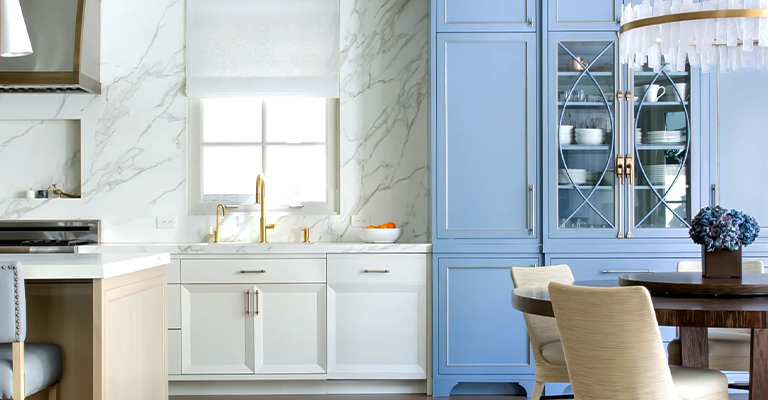Why Two Ovens In Kitchen?-Factors and Implications
In the realm of culinary exploration, the kitchen stands as a creative sanctuary. Within this space, the choice of appliances plays a pivotal role in shaping the cooking experience.
Among these, the inclusion of two ovens emerges as a pragmatic innovation. Beyond mere convenience, it introduces a realm of possibilities that revolutionize meal preparation.
Yet, misconceptions often shroud this choice, leaving questions about its necessity. This discourse aims to elucidate the compelling reasons behind the integration of two ovens in the kitchen.
From heightened efficiency during gatherings to specialized cooking techniques, the advantages are manifold. Delving into this topic unravels a nuanced perspective on optimizing the heart of any home: the kitchen.
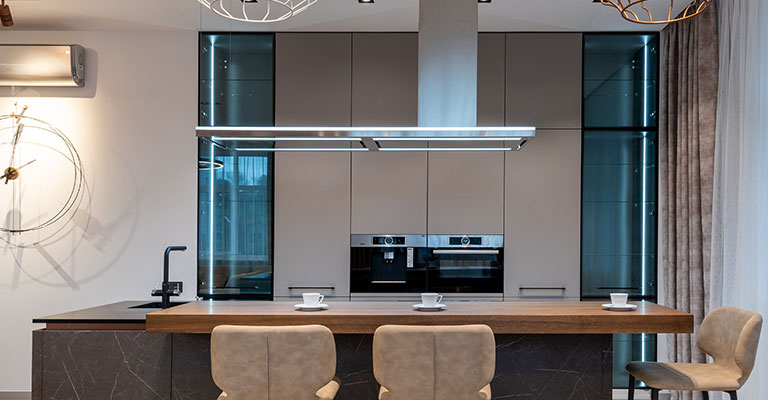
Why Two Ovens In Kitchen?
Having two ovens in a kitchen is a practical and convenient choice for a variety of reasons. This arrangement offers numerous advantages that can greatly enhance the cooking and baking experience.
Here are several compelling reasons why having two ovens in a kitchen is beneficial:
Increased Cooking Capacity
One of the most apparent advantages of having two ovens is the increased cooking capacity.
This allows for the preparation of multiple dishes simultaneously, making it particularly useful when hosting large gatherings or during holidays when a variety of dishes are being prepared.
Time Efficiency
With two ovens, different dishes can be cooked at different temperatures simultaneously, saving a significant amount of time.
This is especially beneficial when you have time-sensitive recipes or when you’re juggling multiple courses.
Versatility
Two ovens provide greater flexibility in terms of cooking methods.
For instance, you can roast vegetables in one oven while baking a cake in the other. This versatility allows for a wider range of culinary creations.
Temperature Control
Different dishes often require different cooking temperatures.
With two ovens, you have the flexibility to set distinct temperatures, ensuring that each dish is cooked to perfection without compromising on quality.
Reduction of Flavor Transfer
Cooking certain dishes together in a single oven can lead to flavor transfer. For example, strong-smelling foods like fish or garlic can impart their flavors onto more delicate items.
With two ovens, you can prevent this from happening by keeping distinct flavors separate.
Specialized Cooking Techniques
Having two ovens enables the utilization of specialized cooking techniques. For example, you can use one oven for slow cooking or sous vide, while the other is used for traditional baking or roasting.
Energy Efficiency
Surprisingly, having two smaller ovens can be more energy-efficient than one large oven.
When you’re only preparing a small dish or a few items, using a smaller oven consumes less energy compared to heating a larger oven.
Convenience during Entertaining
When entertaining guests, having two ovens allows you to keep appetizers warm in one while cooking the main course in the other.
This ensures that all dishes are served at the right temperature, enhancing the overall dining experience.
Catering to Dietary Restrictions
When you have individuals with specific dietary needs or restrictions in your household, two ovens make it easier to prepare separate meals simultaneously.
This is particularly useful in households with vegans, vegetarians, or those with food allergies.
Resale Value
Having two ovens can increase the appeal and resale value of your home.
Potential buyers often view this as a desirable feature, as it offers a level of convenience and luxury that single-oven kitchens do not.
Considerations for Choosing Two Ovens
When choosing two ovens for your kitchen, it’s essential to consider several factors to ensure they meet your cooking needs and fit seamlessly into your space.
Here are some important considerations:
Available Space
Measure the available space in your kitchen to determine if you have enough room for two ovens.
Consider both width and height to ensure they can be installed without any obstructions.
Configuration
Decide whether you want two separate built-in ovens or a double oven unit.
Double ovens typically stack two oven compartments on top of each other, while separate ovens allow for more flexibility in terms of placement.
Fuel Type
Choose between electric, gas, or a combination (dual fuel) based on your kitchen’s existing setup and your personal cooking preferences.
Consider factors like energy efficiency, cooking performance, and ease of installation.
Oven Size and Capacity
Determine the size and capacity of each oven. Consider how many dishes you typically cook at once and choose ovens that can accommodate your needs. Consider factors like the number of racks and cooking space.
Cooking Modes and Features
Look for ovens with a variety of cooking modes and features that align with your cooking style. This may include convection cooking, broiling, dehydrating, and other specialized functions.
Temperature Control
Ensure that the ovens offer precise temperature control. Look for models with accurate thermostats and consistent heat distribution to achieve consistent cooking results.
Energy Efficiency
Check for energy-efficient models that are well-insulated and equipped with features like convection fans or self-cleaning options that can help conserve energy.
Ease of Cleaning
Consider features like self-cleaning options, removable racks, and smooth interiors for easier cleaning. This can save you time and effort in maintaining your ovens.
Brand and Reliability
Research reputable brands known for producing high-quality ovens. Read reviews, ask for recommendations, and consider factors like warranty and customer support.
Budget
Set a budget range for your ovens. Keep in mind that higher-end models with advanced features and technology may come at a premium, so balance your needs with your budget constraints.
Aesthetic Considerations
Choose ovens that complement the overall design and style of your kitchen. Consider factors like finishes, handles, and control panel design.
Installation and Ventilation
Ensure that you have the necessary electrical or gas connections and proper ventilation in place for your chosen ovens. If needed, consult with a professional installer or contractor.
User-Friendly Controls
Opt for ovens with intuitive and user-friendly controls. Clear displays, responsive touchscreens, and well-labeled buttons can enhance your cooking experience.
Dispelling Common Myths and Misconceptions
The concept of having two ovens in the kitchen, while undeniably practical for many, often comes with some myths and misconceptions that deserve to be addressed. These misconceptions can sometimes deter people from considering this culinary upgrade.
Let’s debunk some of the most common myths:
It’s Only for Professional Chefs
One prevalent myth is that having two ovens is an extravagance reserved for professional chefs or those who cook extensively.
While chefs might benefit from the versatility, many home cooks find it highly advantageous for various occasions, from holiday gatherings to everyday meal prep.
It’s a Space Hog
Some people believe that two ovens will consume excessive kitchen space, leaving little room for other appliances or storage.
In reality, modern kitchen design and appliance sizing have made it possible to incorporate two ovens without monopolizing the kitchen.
It’s a Luxury for the Affluent
Two ovens are often perceived as a luxury item that only the affluent can afford. While high-end models can indeed be costly, there are budget-friendly options available.
Having two ovens is more about enhancing cooking efficiency than flaunting wealth.
It’s Not Energy-Efficient
There’s a misconception that using two ovens would be energy-inefficient, leading to higher utility bills.
However, some models are designed to be energy-efficient, and the ability to use a smaller oven for smaller dishes can save energy compared to heating a large oven.
It’s Only for Baking Enthusiasts
While two ovens are a boon for bakers, they offer benefits beyond just baking.
They allow for simultaneous cooking of various dishes at different temperatures, making them equally valuable for those who enjoy roasting, broiling, or preparing elaborate multi-course meals.
You Can Achieve the Same with One Oven
While it’s possible to manage multiple dishes with one oven by careful timing and temperature adjustments, it can be more challenging and time-consuming.
Two ovens simplify the process, especially when you have a time-sensitive or complex menu.
It’s Hard to Install and Maintain
Some may believe that installing and maintaining two ovens is a complicated and expensive process.
In reality, professional installation can ensure a hassle-free setup, and maintaining two ovens is not significantly more demanding than maintaining one.
It’s Not Necessary for Small Households
Even in small households, two ovens can prove advantageous. They enable efficient cooking and save time, which can be especially valuable when everyone has busy schedules.
It’s Not Environmentally Friendly
Concerns about environmental impact may deter some from considering two ovens. However, energy-efficient models and practices can help mitigate these concerns.
Additionally, the convenience of efficient cooking can lead to less reliance on takeout or pre-packaged foods, reducing overall environmental impact.
It’s Just a Fad
Some believe that the trend of having two ovens will fade away.
However, this concept has been around for a while and continues to gain popularity due to its practicality and time-saving benefits.
Maintenance and Care of Two Ovens
Maintaining and caring for two ovens in your kitchen is essential to ensure they continue to function efficiently and safely.
Here are some important tips for the upkeep of your double ovens:
Regular Cleaning
Regularly clean the interior of the ovens to remove grease, spills, and food residue. Use a mild, non-abrasive cleaner and a soft cloth or sponge.
Additionally, remove and clean the oven racks separately using warm, soapy water. Ensure they are thoroughly dry before placing them back in the oven.
Self-Cleaning Function
When your ovens have a self-cleaning function, use it periodically to burn off built-up food particles. Follow the manufacturer’s instructions carefully when using this feature.
Door Seals and Gaskets
Inspect the door seals and gaskets for any signs of wear or damage. Damaged seals can affect the oven’s ability to maintain a consistent temperature.
Ventilation and Exhaust
Ensure that the ventilation system and exhaust fan are clean and functioning properly.
A clogged or malfunctioning ventilation system can affect the oven’s performance.
Check for Leaks or Gas Smells
When you have a gas oven, regularly check for any unusual smells of gas.
When you detect a gas leak, turn off the gas supply and contact a professional technician immediately.
Monitor Temperature Accuracy
Periodically check the ovens’ temperature accuracy using an oven thermometer.
When you notice significant discrepancies, consider calibrating the oven or seek professional assistance.
Inspect the Heating Elements
Examine the heating elements for any signs of damage or wear. If you notice any issues, such as cracks or uneven heating, they may need to be replaced.
Clean the Exterior
Wipe down the exterior of the ovens with a damp cloth to remove any fingerprints, spills, or grease. Avoid using abrasive cleaners or harsh chemicals that may damage the finish.
Maintain the Control Panel
Gently clean the control panel with a soft, damp cloth to prevent dirt or food particles from interfering with the buttons or dials.
Avoid Using Harsh Cleaners
Refrain from using abrasive cleaners, scouring pads, or harsh chemicals on the oven’s surfaces, as they can cause damage.
Inspect the Power Cord and Plug
Periodically check the power cord and plug for any signs of wear or damage. If you notice any issues, contact a professional technician for repairs.
Schedule Professional Maintenance
Consider scheduling annual maintenance with a professional technician to ensure that all components are in good working order and to address any potential issues before they escalate.
FAQs
What are the benefits of having two ovens in the kitchen?
Having two ovens in the kitchen provides increased cooking capacity, allowing for the preparation of multiple dishes simultaneously.
Can two ovens save time and energy during cooking?
Yes, two ovens can save time by allowing different dishes to be cooked at different temperatures simultaneously.
Do I need a large kitchen to accommodate two ovens?
Not necessarily. Modern kitchen designs and appliances come in various sizes, making it possible to incorporate two ovens in smaller kitchens.
Is having two ovens only beneficial for professional chefs?
No, having two ovens is advantageous for both professional chefs and home cooks.
What considerations should I keep in mind when choosing two ovens?
When choosing two ovens, consider factors like available space, fuel type, oven size and capacity, cooking modes and features, energy efficiency, brand reliability, budget, and compatibility with your kitchen’s existing setup.
To Recap
The incorporation of two ovens in a kitchen proves to be a practical and valuable choice for any culinary enthusiast. Beyond the initial perception of extravagance, it offers tangible benefits.
The increased cooking capacity caters to gatherings and special occasions with ease, while precise temperature control allows for diverse culinary techniques.
Contrary to misconceptions, two ovens need not monopolize space, and modern designs accommodate various kitchen sizes. The energy-efficient options available today address concerns about consumption.
Whether for a passionate home cook or a professional chef, two ovens enhance efficiency and open up a realm of culinary possibilities, making them a worthwhile investment in any kitchen.
